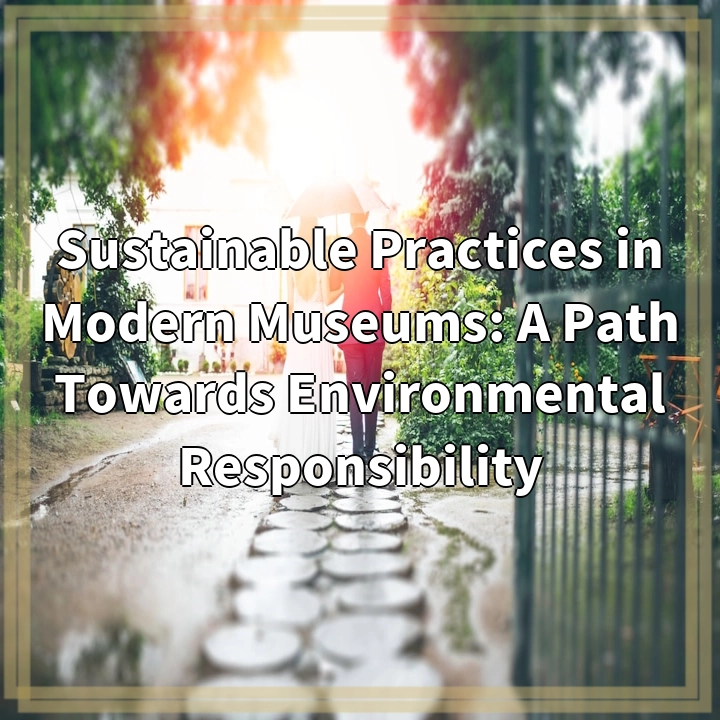
What is Sustainable Practices in Modern Museums?
Sustainable practices in modern museums refer to the adoption of environmentally responsible strategies and initiatives in the operation and management of museum facilities. These practices aim to minimize the negative environmental impact of museums and promote conservation and sustainability in various aspects of their functioning.
Real-World Problems Associated with Sustainable Practices in Modern Museums
While sustainable practices in modern museums contribute to environmental responsibility, they also face several challenges and real-world problems. These problems can hinder the full implementation of sustainable initiatives and impact the overall effectiveness of a museum’s environmental efforts.
1. Limited Resources and Funding
Implementing sustainable practices in museums often requires significant financial resources. Unfortunately, many museums operate on limited budgets, making it difficult to invest in renewable energy systems, energy-efficient technologies, waste management infrastructure, and other sustainable solutions.
2. Historic Building Constraints
Many museums are housed in historic buildings with architectural and preservation constraints. These buildings may lack modern energy-efficient designs and infrastructure, making it challenging to retrofit them with sustainable technologies without compromising their historical integrity.
3. Balancing Preservation and Sustainability
Museums aim to preserve and protect valuable cultural artifacts and collections. However, some conservation and preservation practices, such as climate control and lighting, can consume significant amounts of energy and have environmental impacts. Finding the right balance between conservation and sustainability can be a complex task for museum administrators.
4. Visitor Experience and Engagement
Museums strive to provide an enriching visitor experience. Implementing sustainable practices may involve changes in operations, such as reducing energy-intensive exhibitions or implementing stricter waste management practices. Balancing sustainability efforts with visitor expectations and engagement can be a challenge, as museums need to find ways to educate and involve visitors in their sustainability initiatives.
5. Awareness and Education
Embracing sustainable practices requires awareness, education, and training for museum staff and stakeholders. Lack of knowledge or understanding about environmental issues and sustainability principles can hinder the successful implementation of sustainable practices in museums. Ongoing education and awareness campaigns are essential to ensure effective engagement and participation.
In conclusion, while sustainable practices in modern museums hold great potential in promoting environmental responsibility, they face real-world challenges. Overcoming these problems requires collaboration, innovation, and a commitment to finding sustainable solutions that balance the preservation of cultural heritage with the needs of the environment.

Solutions for Sustainable Practices in Modern Museums: A Path Towards Environmental Responsibility
Despite the challenges faced by museums in implementing sustainable practices, there are solutions and strategies that can help overcome these obstacles and promote environmental responsibility:
1. Seek Funding and Grants
Museums can actively pursue funding opportunities and grants dedicated to sustainability initiatives. Collaborating with environmentally-focused organizations and government agencies can help secure financial resources for investing in renewable energy systems, energy-efficient technologies, and other sustainable solutions.
2. Retrofit Historic Buildings
Museums can work with architects, engineers, and preservation specialists to find creative solutions for retrofitting historic buildings with sustainable technologies. Balancing the preservation of historical integrity and energy efficiency requires innovative approaches that respect the building’s heritage.
3. Implement Energy Management Systems
Using energy management systems can help museums optimize energy consumption. These systems can monitor and control lighting, heating, and cooling systems based on occupancy and exhibit requirements, reducing energy waste and costs.
4. Educate and Involve Visitors
Museums can play a vital role in educating visitors about sustainability and involving them in the museum’s environmental initiatives. Implementing interactive exhibits and programs that showcase sustainable practices can raise awareness and inspire visitors to implement similar practices in their lives.
5. Provide Staff Training and Engagement
Offering training programs and workshops for museum staff can enhance their knowledge and understanding of sustainability issues. Encouraging staff engagement and involvement in sustainable practices can create a culture of environmental responsibility within the museum.
6. Collaborate with Community Partners
Museums can collaborate with local community organizations, universities, and businesses to leverage expertise, resources, and ideas. Engaging with these partners can lead to innovative solutions and sustainable initiatives that benefit both the museum and the broader community.
By implementing these solutions, museums can successfully navigate the challenges and move towards a more sustainable and environmentally responsible future.















